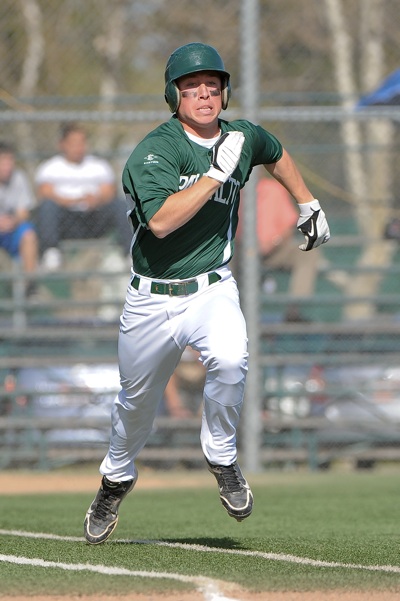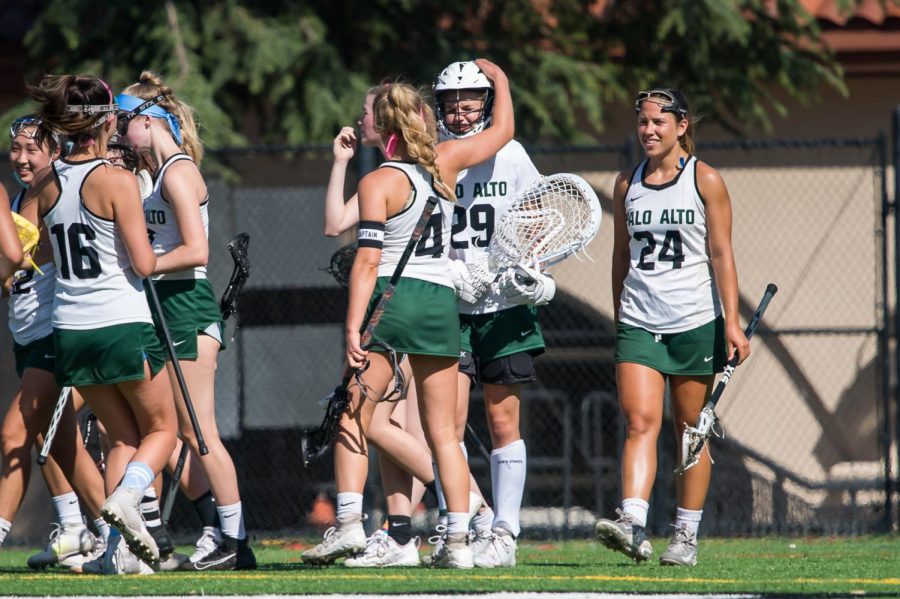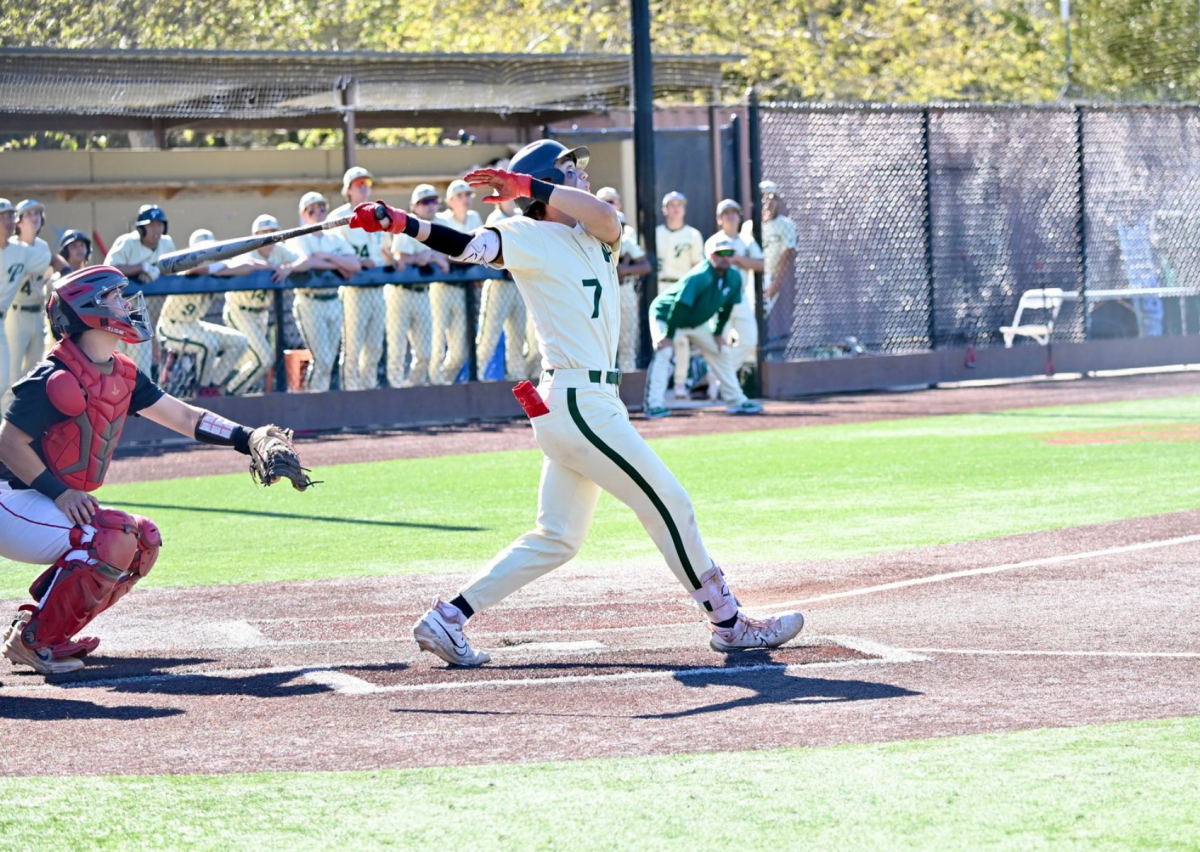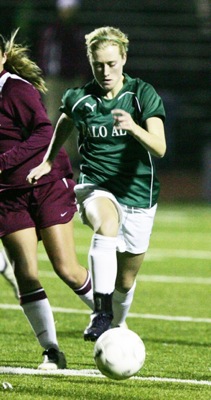Sports fans are accustomed to seeing the bright lights, the big names, the packed stadiums. But being on prime time ESPN is not possible for every college athlete, in fact, very few college athletes receive that type of attention. So what if you are not being recruited by the biggest names in the business? What if you are good, but not good enough? Do you reach for a Division I program merely to ride the bench, or settle for a Division III school only to wonder “what if?”
Scott Witte (‘10), formerly a Palo Alto High School pitcher, chose not to spend his life wondering and now attends the University of Washington in Seattle.
“I wouldn’t have been able to live with myself if I didn’t try to play at the highest level possible,” Witte said. “I also didn’t especially want to go to a small school; I like having something to be a part of.”
Kelly Jenks (‘10), formerly a forward for the Lady Vikes’soccer team, and current forward for the D1 Santa Clara University womens’ soccer team, set the bar high for herself as well, deciding from a young age that she would settle for nothing less than the top tier of D1.
“I always wanted to play at the highest level,” Jenks said. “As I got older and throughout high school, I decided I wanted to play D1. I went to this national soccer camp where the coach told me I could play at a lot of D1 schools. I was really excited because I wanted to but needed a little assurance from a knowledgeable coach.”
Jenks, who led the Lady Vikes with 10 goals and 8 assists in the 2010 season, has 11 games under her belt at Santa Clara, and only one week of school. Although it is the off-season, her training schedule is no joke. She has already become accustomed to a 5:00 a.m. wake up call.
“[The team] got there on Aug. 3rd and had double-days for about three weeks,” Jenks said. “We trained from 9-11 a.m., [and] then from 3-5 p.m., every day of the week. After that span we’ve had single day trainings.”
D1 sports are certainly challenging, but many underestimate how much time the athletes put in. During her three-week-long double-days, Jenks put in a whopping 84 hours of practice and 21 hours of film study. Witte agreed about the demands of D1 sports.
“It definitely takes a lot of time away from my schedule that I would have if I weren’t playing a sport,” Witte said. “I haven’t really been too interested in clubs or frats or anything but I think with baseball it would be too much to handle.”
D1 sports take priority over everything. Not only is there no time for outside activities, but also, in order to solve the conflict between overlapping academic and athletic schedules, D1 athletes get first choice when it comes to registering for classes.
“There is no time for other extracurriculars,” Jenks said. “D1 is all about playing your sport and doing school, that’s about it. D3 on the other hand, allows for you to have a more balanced life. People say academics always come before athletics which is the case at D3 [schools], but at D1 [schools] I feel like it is an unspoken belief that athletics come before academics.”
3,165 miles away from Santa Clara University lies Medford, Massachusetts, a small college town located fifteen minutes outside of Boston. Medford is home to the Tufts University Jumbos, whose soccer team roster now boasts Maeve Stewart, a 2010 Paly graduate and starting forward for the Tufts womens’ soccer team. Stewart already holds the Tufts womens soccer single game scoring record. In the Jumbos’ first game against Middlebury College, Stewart scored a hat trick, leading the Jumbos to a 3-0 victory.

Although both Jenks and Stewart were on an even playing field throughout their high school careers- both were four-year varsity starters and played on very competitive club teams- the decision to play in two different divisions has landed them in two very different places.
While Santa Clara’s gruelling off season consists of double-day practices, 12 league games and four tournaments, the D3 Jumbos, who are members of the New England Small College Athletic Conference (NESCAC), have very stringent rules regarding the number of games and practices a team can have outside of its regular season bounds. The team can only have up to twelve practices and games coxmbined before the regular season officially begins. For this reason, the Jumbos do not play in any tournaments.
Even though D3 regulations cause Stewart’s schedule to be a lot less soccer-intensive than Jenks’, Stewart still sees a significant difference in the competition between the high school and college levels.
“The games are more competitive than high school and club, not just skill-wise,” Stewart said. “There is definitely a different mentality on the field. There are less games to play and each game counts towards the post season, so everyone is playing to win.”
Jenks and Stewart are not the only pair of same sport-athletes to graduate last year. Wade Hauser (‘10), who attends Chapman University, and Witte both played on Paly’s wildly successful baseball team, which finished the season 26-3. Similar to Jenks and Stewart, their post-high school plans both included college sports, though they differed on which league to select. Hauser agrees with Stewart that although D3 sports do not attract nearly as much media attention as D1 powerhouses, the competition is still a great step up from what he faced at Paly.
“The competition is much more cut throat here than I think it would be in high school or club [baseball],” Wade Hauser. “There are a lot of guys who go out their freshman year, [there are] and only a select few who make it, so it’s real important to give it all you got.”
Hauser and Stewart attribute their decision to play D3 mostly to playing time. They felt it was more important that they have a sudden impact on their team’s success, rather than filling in here and there until they earned a starting position.
“It’s really hard to walk on to a D1 program and I had a choice-work my [butt] off and maybe make the team in a D1 program or come into a competitive D3 program and be able to be an impact guy right off the bat,” Hauser said.
Stewart also took into consideration the level of involvement in other school activities that a Division 3 school would allow versus a D1 school. A D1 training regimesuch as Jenks’s, allows minimal time for extracurriculars.
“I decided to play D3 because I can play soccer and be involved with other things around campus,” Stewart said. “The soccer is more competitive than my club and high school, but I’m not married to the sport. If I want to take a semester abroad, the spring season isn’t holding me back. I can join clubs, take the classes I want to take and not feel pressure from my coaches or teammates to only think about soccer.”
For all of the Paly graduates participating at a collegiate level, one thing is for certain-the level of competition exceeds anything that they had experienced in their years as a high school athlete. However, with their respective decisions to play either D1 and D3, the two sets of former teammates have landed themselves on two different playing fields. Hauser and Stewart’s progression from high school athletics to playing at the D3 collegiate level can be seen as a step up in the soccer and baseball hierarchy, while in Jenks’s and Witte’s case, it is more accurate to say that the transition from high school sports to D1 collegiate competition is better represented by a five-foot box jump.
“It’s the hardest thing I have ever done,” Jenks said. “Both physically and mentally you have to be really tough. It’s more like a job. It is also fun and you play because you love the sport but there’s definitely this added pressure that you’ve been recruited and give money to play here so you’d better perform and ‘do your job’ as my coach puts it.”
Witte also recognizes that playing at the D1 level is comparable to playing professionally in the sense that D1 schools grant huge sums of scholarship money to get their athletes on the field. However, he also sees great value in playing D1 sports despite the grueling practice schedules and constant travel- personal betterment.
“I might not even make the team after 4 months of practice,” Witte said. “But at least I know I tried.”






